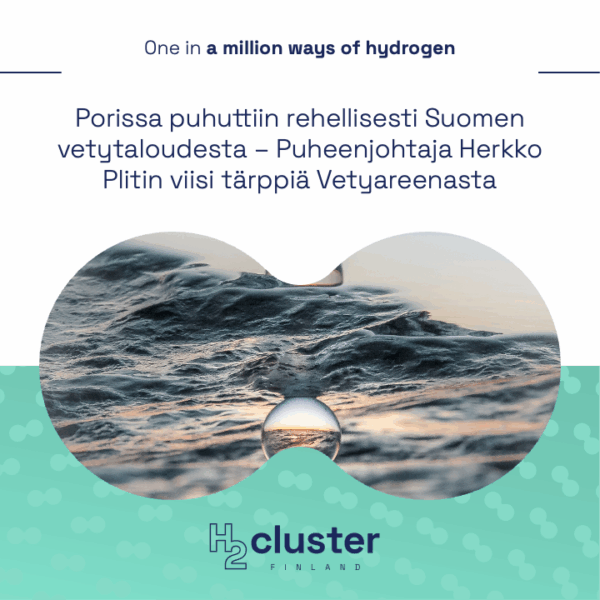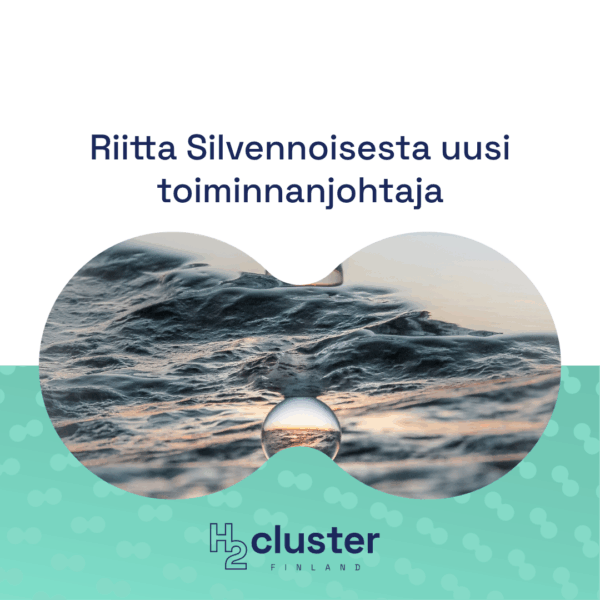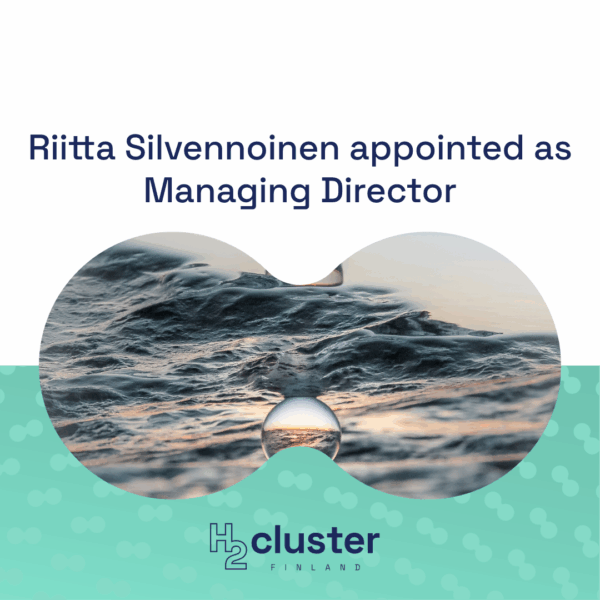The realization of the possibilities for carbon dioxide capture requires cooperation
Carbon dioxide capture, utilization, and storage will be essential for achieving the EU’s climate targets. Finland has excellent conditions to be at the forefront of European bio-based carbon dioxide utilization and storage.
A favorable operating environment is crucial for the development of the sector, and Finland needs a clear national strategy. It is also important to take into account the synergies between the hydrogen economy and carbon dioxide solutions. Furthermore, creating new business requires strong collaboration among various stakeholders.
Carbon dioxide capture, utilization, and storage (CCUS) have rapidly emerged as a key pillar of climate policy both internationally and domestically. Achieving the EU’s climate targets will require significant amounts of carbon dioxide capture. This creates significant new business opportunities. Investments play a key role. A particularly important part of the whole is biogenic or directly captured carbon dioxide. In Finland, carbon dioxide capture, utilization, and storage were highlighted in the government program as one of the spearheads of national climate policy, with several interfaces to the emerging hydrogen economy.
In Finland, approximately 28 Mt of biogenic carbon dioxide is produced annually from large point sources as a by-product of industrial wood processing and energy production. Currently, there are around 15 projects planned in Finland, according to public information, aiming to implement carbon dioxide capture. In these projects, the captured carbon dioxide will mainly be used for the production of synthetic fuels, and if realized, the combined demand for biogenic carbon dioxide from these projects will be approximately 1.1 MtCO2. The required amount of carbon dioxide does not create competition between carbon dioxide utilization and storage. Finland has the capability to implement both biogenic carbon dioxide utilization (bio-CCU) and storage (bio-CCS) projects. Bio-CCU projects enable emissions reduction by providing a sustainable source of carbon dioxide for the production of various products and by replacing fossil raw materials, while bio-CCS projects enable the production of negative emissions (i.e., so-called technical carbon sinks). Both solutions are needed—not only within Finland’s borders but globally as well.
Key messages from the joint efforts of Bioenergy Association, Hydrogen Cluster Finland, and Finnish Biocycle and Biogas Association:
- Finland has excellent conditions to be at the forefront of Europe in producing solutions for the utilization and storage of biogenic carbon dioxide. Utilizing biogenic carbon dioxide can reduce emissions and, through long-term storage, even remove carbon from the atmosphere. New EU regulations are forthcoming, strengthening incentives to adopt these solutions.
- Finland needs a clear national strategy for carbon dioxide capture, transportation infrastructure, utilization, and storage.
- The significance of hydrogen in European energy and climate policy is rapidly growing. The hydrogen economy is one of the key drivers for the capture and utilization of biogenic carbon dioxide. Synergies between the hydrogen economy and carbon dioxide solutions should be considered in both policy actions and infrastructure planning.
- Carbon dioxide capture, utilization, and storage will be one of the cornerstones enabling the EU to achieve its climate targets. The EU is currently developing a regulatory framework, promotion measures, and infrastructure for CO2 utilization and storage. Finland, in collaboration with other Nordic countries, must ensure that these plans also consider the opportunities and needs offered by biogenic carbon dioxide in policy actions. A clear distinction must be made between fossil and biogenic captured carbon dioxide when planning promotion measures. It is clear that the biomass used in carbon capture solutions must also be sustainable. Environmental benefits derived from biogenic carbon dioxide production must be rewarded accordingly.
- The operating environment must be improved. The most significant factors slowing down the adoption of technologies are underdeveloped regulatory frameworks and necessary incentives for the introduction of new market models, as well as insufficient investment and production support. Clear market-based incentives are needed to promote these key solutions for the coming decades. In addition, the carbon dioxide transportation infrastructure requires preparation for both pathways.
- Biogenic carbon dioxide should be more closely integrated into the EU’s strategic vision for circular and bioeconomies; currently, the examination is inadequate at the EU level. Broad-based efforts are needed to influence this.
- Leading the way through collaboration! Creating new net-zero world businesses requires cooperation between governments, companies, research institutions, organizations, and civil society. It is in everyone’s common interest to build together new solutions that can create value for both businesses and society.
Bioenergy Association, Hydrogen Cluster, and Finnish Biocycle and Biogas Association jointly organized the Opportunities for Carbon Dioxide Capture event, which gathered over 200 interested individuals to hear and discuss the topic at Helsinki’s Oodi on February 6, 2024. The event featured speeches on regulation, stakeholders’ projects, and plans. The government’s perspective at the event was provided by Minister of the Environment and Climate Kai Mykkänen.
For more information:
Bioenergy Association:
Erika Laajalahti, Sector Manager, Carbon Sequestration and CCUS
+358 44 753 0700, erika.laajalahti@bioenergia.fi
H2 Cluster Finland:
Marko Janhunen, Member of the Hydrogen Cluster Steering Group
+358 50 590 0047, marko.janhunen@upm.com
Finnish Biocycle and Biogas Association:
Anna Virolainen-Hynnä, Executive Director
+358 400 987805, anna.virolainen-hynna@biokierto.fi
Originally published as a press release in Finnish: https://www.epressi.com/tiedotteet/energia/hiilidioksidin-talteenoton-mahdollisuuksien-konkretisoituminen-vaatii-yhteistyota.html



